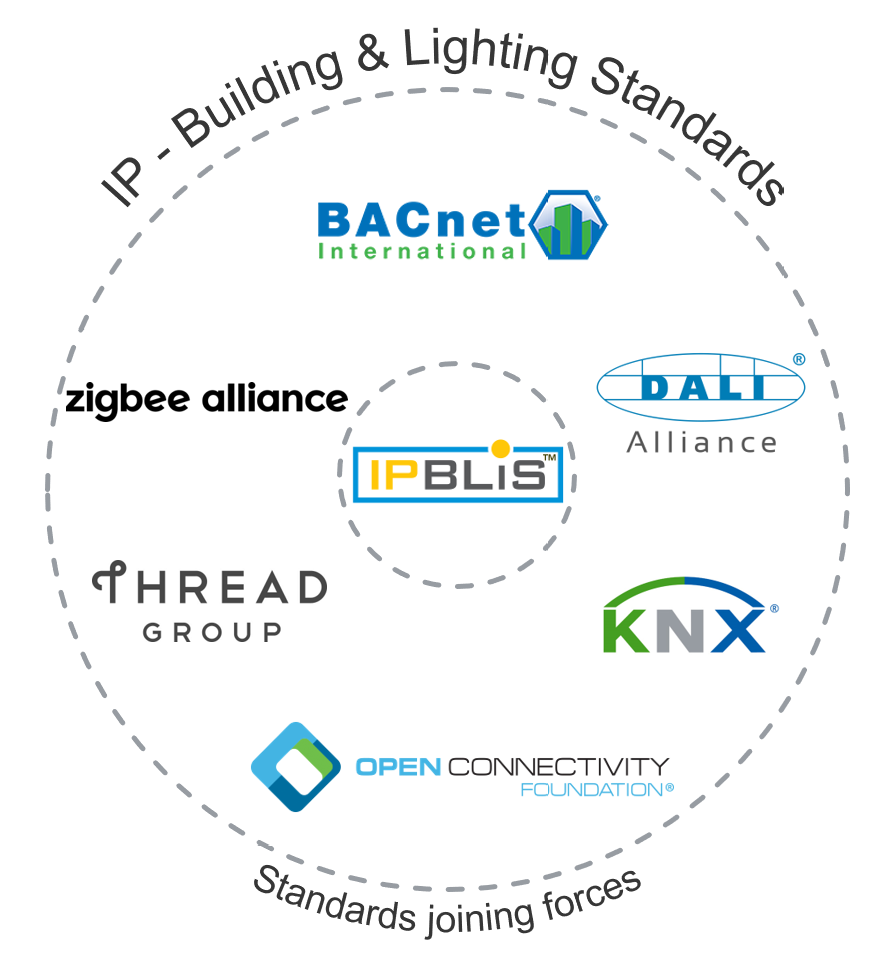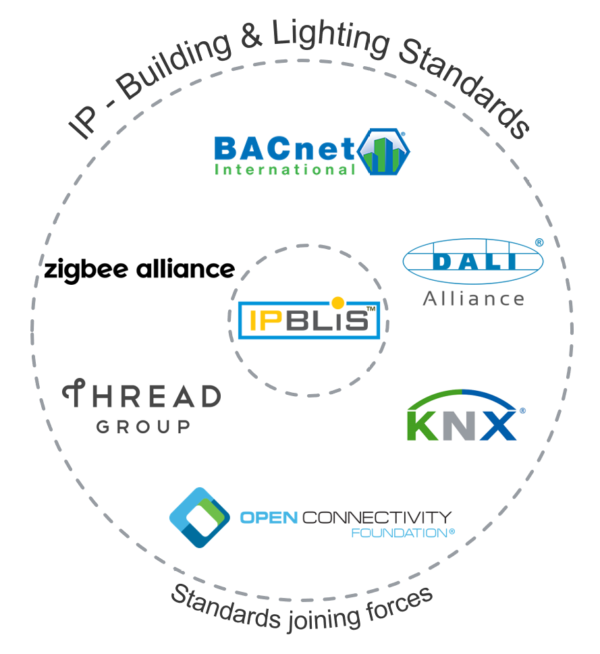Market Interest Group
Standards Joining Forces
IP-BLiS (IP - Building & Lighting Standards)
Not a new organization; existing organizations are working together

Vision
To make commercial buildings more responsive to the needs of users by promoting a secure, multi-standard, IP-based harmonized IoT solution.
Mission
The IP-BLiS liaison parties, through collaboration and cooperation, will educate and influence the market regarding application framework standards over IP for commercial building connectivity through marketing and communications.
Goals
The members of IP-BLiS intend to align on a common network on-boarding and shared secure network communication procedures to be applied in administrated IP based networks for building control and management systems
These common procedures
Ensure uniform integration of different control systems in a shared administrated IP based network
Reduce the network administration effort serving different systems
Harmonization of access to an IP network with connected
building automation products allowing for better integration.
Today: Many Building Technologies...
There are many connected devices in Smart Buildings
But, applications for remain in silos, each with their own proprietary solutions.

Trend: Convergence of Building Systems with IT...
Lighting control and building management systems with IT convergence into a secure all-IP-based configuration.

Trend: Facilitates IoT for Commercial Buildings...
Breaking down these barriers by making data of the various building automation application protocols accessible via an IP address (instead of an application protocol specific address).

Benefits of IP-BLiS
- Single IP backbone for all building automation products: IP (IPV6)
- Enables common security in building networks
- Eases IT department’s ability to support, application protocol for building automation products knowledge not needed
- Seamlessly integrates wired and wireless connectivity options to reduce installation costs
- Common IP networks allow for monitoring groups of devices instead of single devices
- Limitless scalability
- Potentially: common semantic interpretation of data independent from the used application protocol
Problem: Isolated Building-automation Domains and Networks

Each domain requires a gateway (GW) to translate proprietary protocols into IP. The building administrator has limited control over individual devices in each domain, and provisioning is complex.
Problem: Why Convergence on the Application Layer Doesn’t (Always) Work

One shared gateway (GW) to translate protocol into IP.
GW needs to be managed and trusted by all verticals simultaneously.
Solution: Common IP-based infrastructure

Building administrators gain streamlined control over application domains, with real-time monitoring of the shared common network, simpler provisioning, and the possibility to extend this to multiple buildings through the cloud.
Participating Organizations
